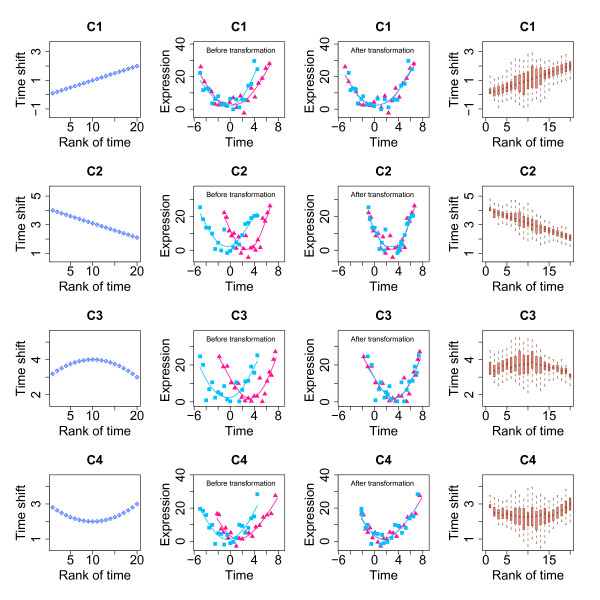Figure 3.
Estimating simulated time shifts with DTW-S. The leftmost columns show the distributions of the four sets of variable time shift (C1, C2, C3 and C4). In panels C1 and C2, the simulated time shift is increasing or decreasing linearly, while in panels C3 and C4, the time shift follows a quadratic trajectory. The second column from the left shows the corresponding two expression time series, sp1 (purple) and sp2 (light blue). These are simulated based on the function y = 1+t+t2+ε (y is the expression level, t is time and ε shows error), as well as on the time shifts following the patterns C1 to C4. The third column from the left shows the two expression time series after shifting sp2 to sp1 by the magnitude of the shifts estimated by the DTW-S. The rightmost columns display the corresponding time shift values estimated by the DTW-S algorithm in 1,000 simulations of sp1 and sp2 time series, with random error ε~N(0, 4).

